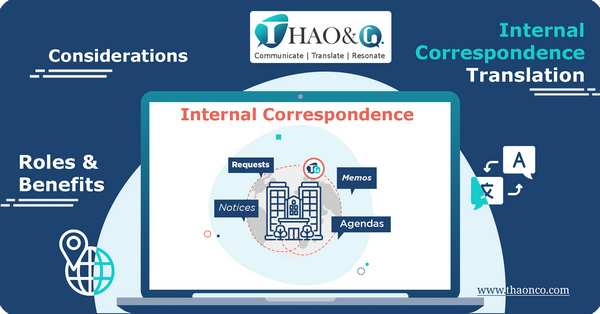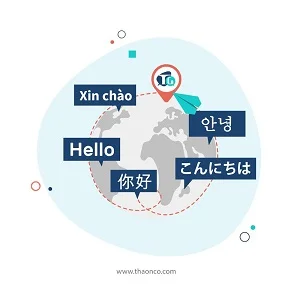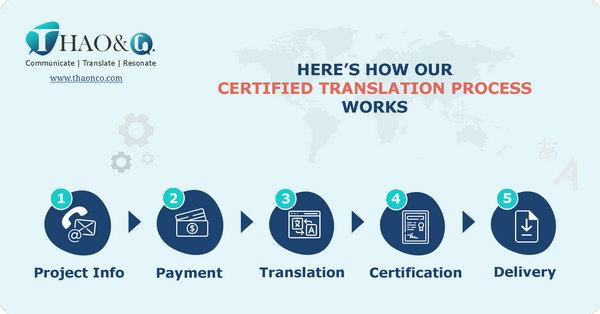Internal correspondence, or internal communications translation plays a pivotal role in the seamless operation of multinational corporations. In today’s world, globalization has become a driving force for businesses to pursue global expansion. This also contributes to a diverse workforce, attracting overseas talents from all over the world.
However, ensuring smooth communication in a multinational, multilingual, and multicultural working environment is considered a challenging task for many businesses. Translating internal correspondence is an optimal solution to tackle this pressing problem. So, what do you know about the process of translating internal communications and correspondences? When will you need this kind of translation service? Let’s find out the answer with Thao & Co. in this article!
Internal communication is the exchange of information between employees or departments in a company. To maximize work efficiency, internal communication systems should be designed to ensure that all employees have swift and convenient access to information.
Internal communications translation is a process of translating communication documents to ensure the information being conveyed can be well-received. This is deemed to be a powerful tool for overcoming language barriers among employees, creating consistency in the workplace, and minimizing errors. As a result, multinational companies can harmonize their workforce and enhance efficiency, regardless of their employees’ linguistic backgrounds.

Internal communications translation plays a crucial role in the following cases:
Related article: What is General Translation?
Internal communications and correspondences cover a wide range of communication forms and tools for employees to exchange information. There are 6 common categories of internal documents that require translation:

In the era of integration, businesses often open worldwide branches and recruit multinational staff. This poses a significant challenge in terms of communication, maintaining corporate culture, and fostering a cohesive workplace. Translating internal communications and correspondences emerges as a solution to leverage the advantages of the multilingual working system through:
Maintaining corporate culture: This is one of the most important roles of translating internal communications and correspondences. Corporate culture is a perfect combination of core values, beliefs, operational practices, and more, from both staff and leadership, ultimately defining its brand personality. Successfully maintaining corporate culture during business development contributes to cultivating consistency in organizational operations.
Enhancing communication efficiency between employees and branches across diverse countries: Internal correspondence translation also helps bolster communication efficiency between employees and branches spanning various countries. When the communication process occurs seamlessly and accurately, the enterprise system can function smoothly, free from disruptions or errors.
Cultivating a professional working environment: A professional working environment is characterized by prompt communication and accurate transmission of information. The translation of internal correspondence helps instill a sense of empowerment and respect among employees, ultimately enhancing overall work efficiency within the workplace.
Boosting employee engagement: Communication is the key to sustainable relationships, and businesses should prioritize this aspect when building their workforce. A cohesive human resources system can yield great results and enhance business success. However, in a multilingual workplace, attaining that goal would require the help of internal correspondence translation.
To increase efficiency in translating internal communications and correspondences, you should take notice of the following aspects.
Defining your business purpose and needs is crucial in order to obtain an accurate translation that meets your expectations. Businesses should specify language pairs, level of importance and urgency of each type of document. This will help you find a translation agency that aligns seamlessly with your unique project needs.
One of the most crucial steps in translation is prioritizing content to ensure that urgent and strategically important information is promptly delivered to the intended audience, thereby avoiding potential delays, particularly in large-scale projects. This involves a thorough analysis and assessment of the content, determining key information that requires immediate translation while also identifying less critical content that can be translated at a later stage.
Typically, the priority level should be as follows: announcement emails, internal newsletters, meeting minutes, memorandum, etc.
When it comes to obtaining high-quality translation in a timely manner, it is crucial to find a professional translation agency. Besides, it is crucial to take into account how a company manages confidential documents and its turnaround time. Steer clear of agencies that lack transparent and effective security policies for safeguarding confidential documents and information from unauthorized disclosure.
In addition, translation companies need to uphold their commitment to delivering translations as agreed upon. This will guarantee an uninterrupted flow of your organization’s operations. To achieve these objectives, it is important to seek a translation agency that features a team of highly specialized linguists with extensive experience in translating internal communications and correspondences.
Thao & Co. Translation Agency is one of the most credible agencies offering internal correspondence translation services. Our team of highly experienced translators has successfully undertaken numerous large projects.

With our general translation solutions, you can expect to receive high-quality translations that meet industry requirements and standards. Feel free to click the Get a Quote button for a prompt consultation today!
As a professional translation and localization company, Thao & Co. provides high-quality Internal Communications Translation Services in more than 50 languages: